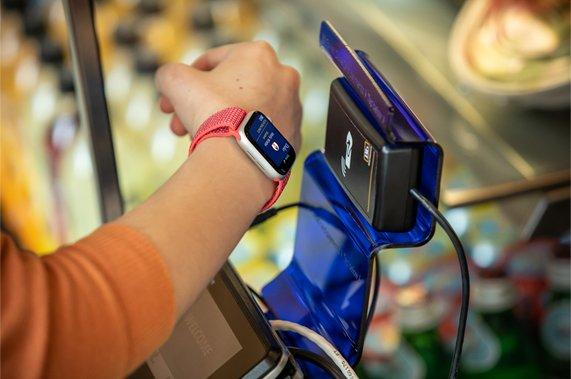Introduction
The future of commerce is not in your pocket; it’s on your wrist, your finger, or even woven into your clothing. Wearable payments are rapidly moving from a niche convenience for tech enthusiasts to a mainstream financial tool, transforming how consumers interact with point-of-sale terminals. This shift is fueled by a powerful convergence of contactless technology, miniaturized hardware, and a growing consumer desire for seamless, hands-free transactions that prioritize speed, security, and style.
According to Straits Research, the global wearable payments landscape was valued at USD 66.01 billion in 2024 and is expected to grow from USD 78.09 billion by 2025 to reach USD 299.56 billion by 2033, growing at a CAGR of 18.3% during the forecast period (2025 to 2033). This explosive growth trajectory underscores a fundamental change in consumer behavior, as wearables become the preferred vehicle for the tap-and-go payments revolution that is sweeping across the globe.
Key Players and Global Competitive Analysis
The ecosystem is a dynamic mix of tech titans, financial service providers, and a new wave of specialized innovators.
-
United States: The Tech and Finance Powerhouse. The U.S. is a dominant force, led by Apple Inc. and its Apple Watch, which remains the category leader. Apple’s seamless integration of Apple Pay with its wearable hardware and its focus on user privacy and security has set the industry standard. Google (US) follows with its Wear OS platform and Google Wallet, partnering with a wide array of smartwatch manufacturers like Fossil Group and Samsung (South Korea) to offer the service on their devices. Fitbit (owned by Google) also incorporates NFC payment capabilities into its trackers and watches.
-
Europe: Banking Collaboration and Innovation. European adoption is heavily driven by strong banking partnerships. Barclays (UK) was an early pioneer with its bPay wearable stickers and bands. Garmin Ltd. (Switzerland) has successfully carved out a niche in the premium sports watch segment, with Garmin Pay widely supported by European banks. Furthermore, the continent's high penetration of contactless POS terminals creates an ideal environment for wearable adoption. Recent updates show European banks are more readily partnering with a wider range of wearable brands compared to more cautious U.S. institutions.
-
Asia-Pacific: Mass Adoption and Diverse Form Factors. The Asia-Pacific region, particularly China, is a hotbed of innovation and adoption. Alibaba’s Alipay and Tencent’s WeChat Pay have partnered with numerous device makers to embed their payment solutions into everything from bracelets to rings. Samsung (South Korea) is a key player globally, with its Galaxy Watch series and Samsung Pay being particularly strong in its home market and across Asia. The region is also seeing a faster adoption of alternative form factors beyond watches.
-
The Rise of the Specialists: The Smart Ring Frontier. A new competitive front has emerged with smart rings. Companies like McLear Ltd (with its NFC Ring) and Oura are pioneering this space. The recent announcement that Eliq is developing a ring with payment functionality highlights the trend towards minimalism and "always-on" payment devices that are more discreet than a watch.
Trends, Growth, and Recent News
The most significant trend is the expansion beyond the wrist. While smartwatches dominate, the future lies in diversifying form factors. Smart rings, payment-enabled jewelry, and even textiles with embedded NFC chips are gaining traction for their convenience and discreteness. Secondly, enhanced security is a paramount focus. The use of tokenization, where a unique digital code replaces card details, and the integration of biometric authentication (like heart-rate patterns in rings) are making wearables more secure than physical cards.
A major recent news development was the announcement of a strategic partnership between Google and Garmin to deepen the integration of Google Wallet on Garmin’s newest fitness watches, aiming to challenge Apple's dominance in the high-end health-and-payments segment. Furthermore, JP Morgan Chase recently announced it will support wearable payment devices from a broader range of manufacturers, signaling a thaw in the previously restrictive stance of major U.S. banks.
Summary
Wearable payments are evolving from a smartwatch feature to a diverse ecosystem of discreet, always-accessible transaction tools. Driven by technological miniaturization, robust security, and strategic partnerships between tech and finance giants, this shift is making physical wallets optional. As form factors diversify and global bank support expands, paying with a wearable is set to become the new norm.



